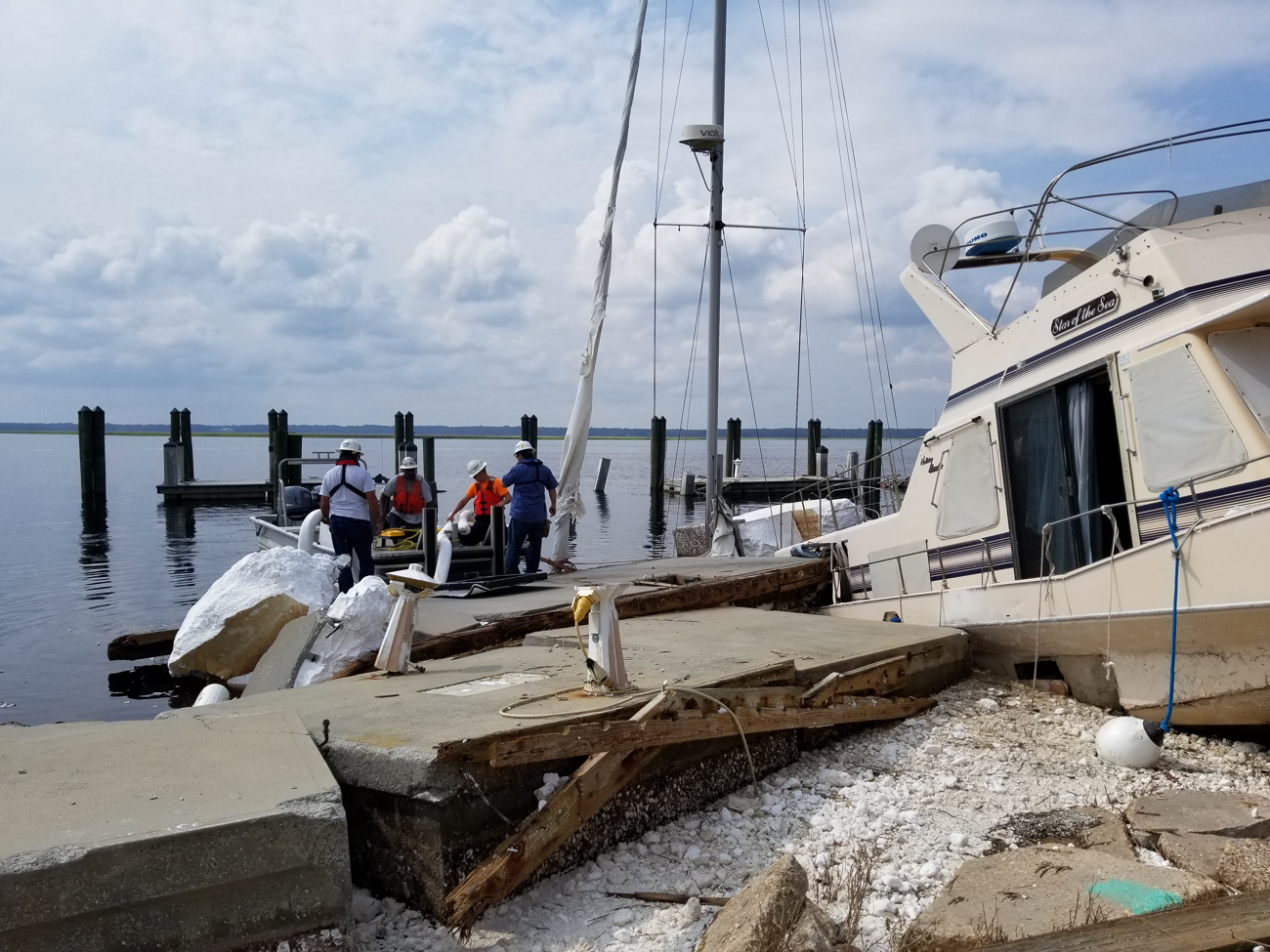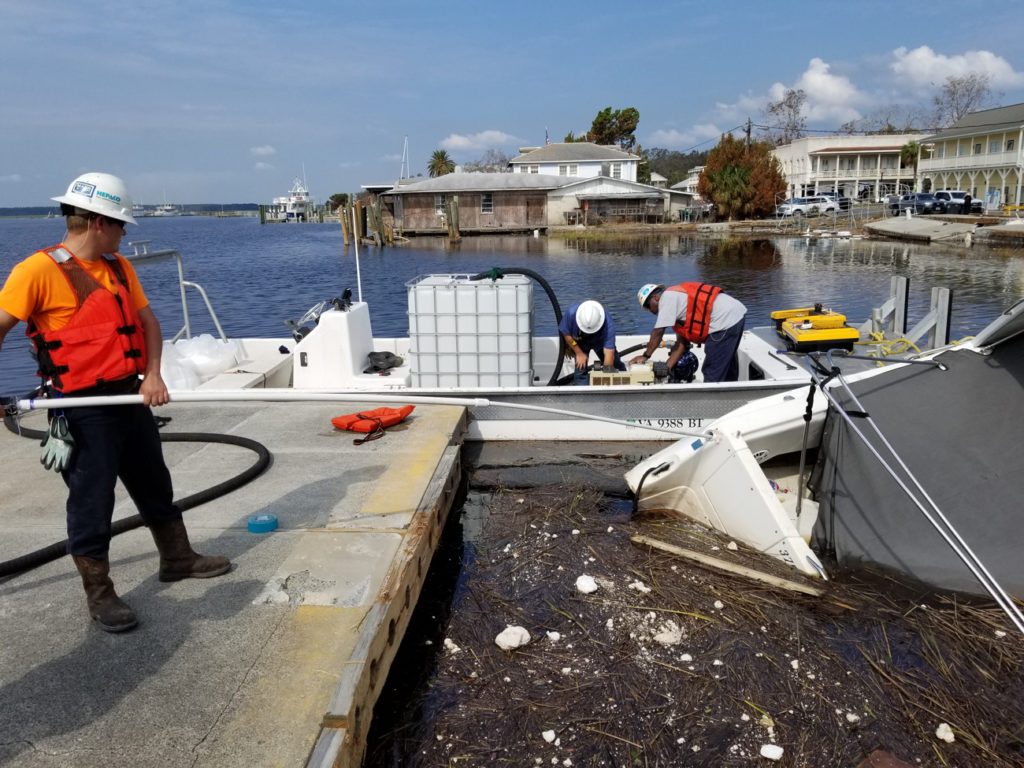
Hurricane Response: Returning to Work Safely
Published on November 2, 2017With the devastation resulting from Hurricanes Harvey and Irma, employers and employees may find themselves in unfamiliar territory. The impacts of wind, rain, storm surge and potential flooding can leave facilities in a state of disarray. As employees return to work and begin the cleanup process, all employers should consider the following items to return to work safely.
Recognize the increased risk of hazards – cleanup and recovery efforts may require employees to conquer unfamiliar tasks by unusual means. The travel lift may have to operate in a space it normally would not. A crane may be working on the property to help recover boats that may have blown or drifted off stands. Employees may be operating chainsaws to clear tree debris. Business owners and managers should recognize the increased risk for potential hazards and unfamiliar situations, and ensure employees are protected from injury.
Expect the unexpected – cleanup efforts may expose employees to hazardous materials such as harmful chemicals, raw sewage or damaged electrical systems. Employees should also be mindful of the impact these storms have had on local wildlife. The Florida Department of Health says wildlife, including snakes and alligators, could pose a threat after being displaced by Irma’s strong winds and rain.

No Shortcuts – businesses and employees will have a desire and a sense to return to “normal” as quickly as possible. Cleanup and recovery requires a systematic and patient approach. Cutting corners, taking unnecessary risks and complacency can all lead to very serious injuries. Take the time to assess the situation, don the proper personal protective equipment, and work through potential hazards safely.
Understand OSHA activity may increase – In Texas, federal Occupational Safety and Health Administration (OSHA) has already deployed additional resources to the areas impacted by Harvey. Recognizing the increased risk for employees to be exposed to hazards and a significant surge in the workforce from out of town workers, OSHA has deployed these resources to increase education outreach and enforcement activities. Those dealing with the aftermath of Irma in Florida should expect a similar response from OSHA.
Know the injury reporting/recording requirements – OSHA requires employers to report serious injuries. In addition, employers with 10 or more employees should understand the requirements of recording any workplace injury in the OSHA 300 log. For serious workplace accidents, federal OSHA requires employers to report:
- any incident requiring overnight hospitalization, amputations, or loss of an eye with 24 hours, and;
- any workplace fatality must be reported within 8 hours.
Be sure to review your requirements based on your location. Both Texas and Florida will follow the federal OSHA guidance, other areas impacted by these storms such as Puerto Rico and the U.S. Virgin Islands may fall under jurisdiction of a state level OSHA plan.
Review/implement safety plan – as business returns to normal take the time to review/ implement a safety plan. This process should include a review of required records such a Safety Data Sheets, OSHA 300 series documents, respirator medical documents and equipment inspections. The review should also include updating documented policies and procedures, employee training and hazard abatement.
Robert Smith is director of Marine Safety Programs for MYMIC Training Technologies in Portsmouth, Virginia. He can be reached at Robert.smith@mymic.net or by phone at 757-589-5391.
| Categories | |
| Tags |






